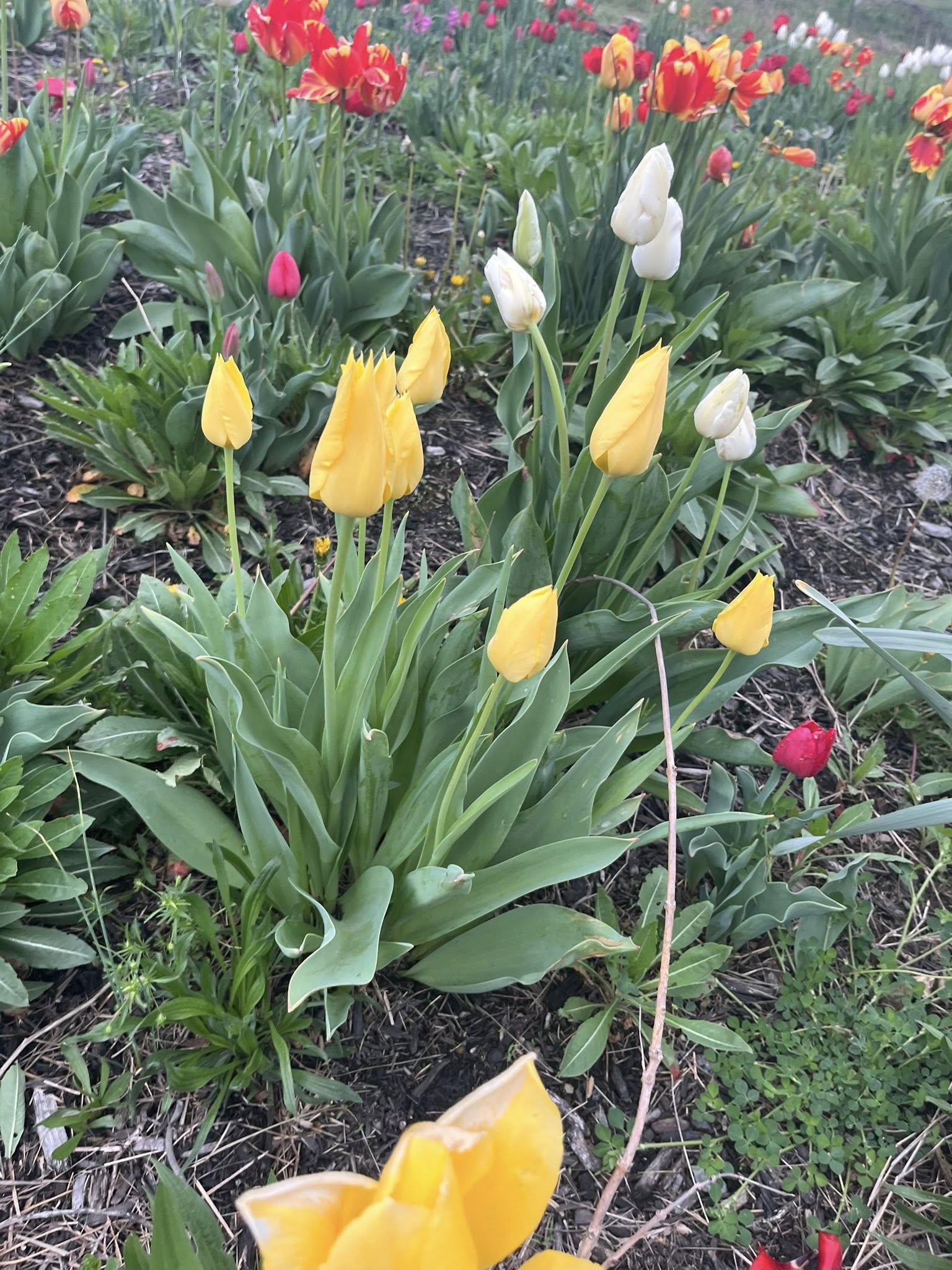
There’s a certain magic in planting tulips in fall—dropping lifeless little bulbs into chilly soil, then months later, watching them burst into color like a celebration you almost forgot you planned.
But here’s the twist: if you make even one small mistake while planting, your garden party might never start.
So, whether you’re a beginner dreaming of a vibrant spring display or a seasoned green thumb hoping to level up, knowing what not to do can be just as important as knowing what to do.
Let’s dig into the 5 most common mistakes gardeners make when planting tulip bulbs in fall—and more importantly, how to avoid them.
1. Planting at the Wrong Time: Are You Too Early or Too Late?
Timing is everything when it comes to tulips.
Plant too early, and you risk the bulbs sprouting before winter—only to be zapped by frost. Plant too late, and they might not root at all.
So, when’s the sweet spot?
- Best time: Late October to early November (or when your soil consistently hits around 50°F/10°C)
- Why it matters: Cooler temperatures prevent early growth and encourage strong root development before winter sets in
Pro Tip: In warmer climates, refrigerate your bulbs for 6–8 weeks before planting to simulate winter conditions.
2. Skipping the Soil Check: Is Your Ground Ready for Greatness?
You wouldn’t build a house on a swamp, right? The same logic applies to bulbs.
Tulips hate sitting in soggy soil. It can cause the bulbs to rot before they ever get a chance to grow.
What should you check before planting?
Soil Drainage
- Test it: Dig a small hole, fill it with water, and see how long it takes to drain
- Drains within an hour? Great.
- Still pooling after a few hours? You need to fix that.
Amend if Needed
- Clay-heavy soil? Add compost or coarse sand.
- Too compact? Loosen it up with organic matter.
Remember: Tulips thrive in well-drained, slightly sandy soil with a neutral to slightly acidic pH.
3. Planting Too Shallow (Or Too Deep): Are Your Bulbs at the Right Depth?
A common mistake that could spell disaster? Planting tulip bulbs too close to the surface—or burying them like treasure.
How deep should tulip bulbs go?
- Rule of thumb: Plant 3x the height of the bulb
- For most tulip bulbs, that’s about 6 to 8 inches deep
- Too shallow? The bulb risks freezing or being dug up by squirrels
- Too deep? It might exhaust its energy before blooming
Extra Tip: Plant pointy end up! It sounds simple, but it’s a mistake even experienced gardeners make in a rush.
4. Ignoring Spacing: Are You Crowding Your Blooms?
Think of tulips like performers on a stage—each one needs its own space to shine.
If bulbs are crammed together, you risk:
- Poor air circulation
- Increased chance of fungal diseases
- Stunted growth
What’s the ideal spacing?
- 4 to 6 inches apart is a safe and effective rule
- Leave enough room for future digging, watering, and maintenance
Design Tip: If you’re aiming for that lush, magazine-worthy spring bloom, try grouping in odd numbers (like 5 or 7 bulbs per clump) instead of planting in straight lines.
5. Forgetting to Protect from Pests: Who Else Loves Tulips as Much as You Do?
Let’s talk about the silent destroyers of your spring dreams: squirrels, deer, and voles.
These critters see your fresh-planted bulbs as a gourmet buffet.
How do you keep them out?
Squirrel-Proofing Tips
- Lay chicken wire over the planting area and cover with soil
- Sprinkle crushed red pepper or bone meal around the garden
Deer-Deterrent Tricks
- Plant tulips near strongly scented flowers like daffodils or alliums (they act as natural repellents)
- Use commercial deer repellents or motion-activated sprinklers
Bonus Defense
- Try planting your tulips in pots and moving them to a safer location (like a garage or shed) until growth begins
More Tips for a Blooming Success
A. Choose Quality Bulbs
Don’t grab the shriveled ones from the bargain bin. Look for firm, healthy bulbs that are free of mold or damage.
B. Water After Planting (But Not Too Much)
Give your bulbs a solid first drink to help roots start forming—but avoid soggy conditions afterward.
C. Don’t Mulch Too Early
A light mulch helps with temperature control, but too early can trap moisture and cause rot. Wait until the ground begins to freeze.
Final Thoughts: Plant with Patience and Purpose
Tulips are among the easiest flowers to grow—if you avoid the most common pitfalls.
When planted right, they’ll reward your effort with an explosion of color in early spring, long before most other flowers dare to bloom.
So, go on—plant with confidence.
Avoid these five mistakes, and your future self (and garden) will thank you when the snow melts and the tulips rise like little beacons of hope.
